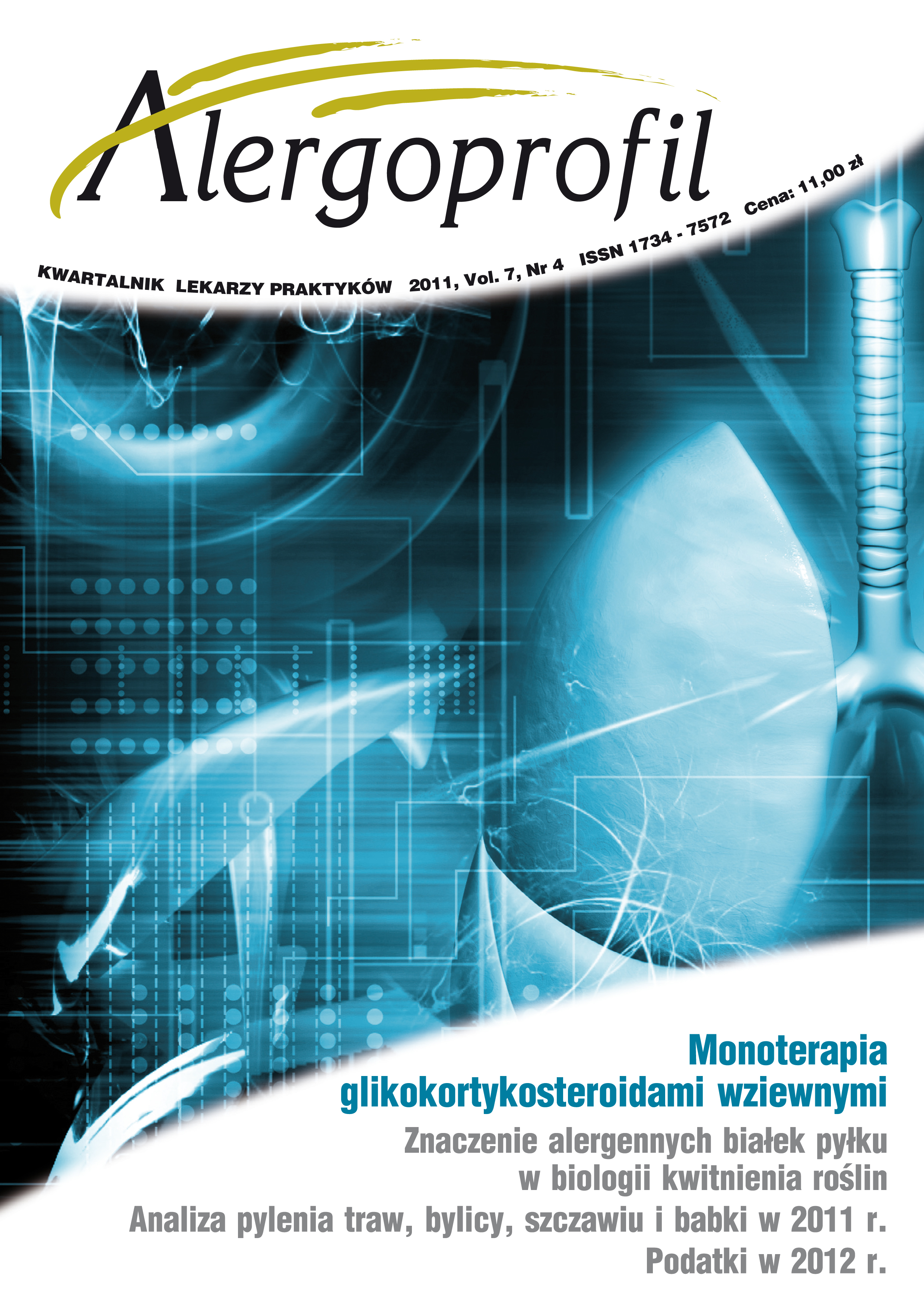Miejsce monoterapii glikokortykosteroidami wziewnymi w świetle obecnych standardów terapii astmy
##plugins.themes.bootstrap3.article.main##
Abstrakt
Wraz z poznaniem i zrozumieniem patomechanizmów astmy potwierdzono podstawową rolę glikokortykosteroidów wziewnych w jej terapii. Efektywność leczenia udowodniono zarówno w badaniach oceniających stan morfologiczny błony śluzowej oskrzeli, jak i klinicznych – oceniających kontrolę choroby. W artykule przedstawiono zagrożenia związane z nieprawidłowym leczeniem astmy oraz nieprzestrzeganiem zaleceń lekarskich.
Pobrania
##plugins.themes.bootstrap3.article.details##
Copyright: © Medical Education sp. z o.o. This is an Open Access article distributed under the terms of the Attribution-NonCommercial 4.0 International (CC BY-NC 4.0). License (https://creativecommons.org/licenses/by-nc/4.0/), allowing third parties to copy and redistribute the material in any medium or format and to remix, transform, and build upon the material, provided the original work is properly cited and states its license.
Address reprint requests to: Medical Education, Marcin Kuźma (marcin.kuzma@mededu.pl)
Bibliografia
2. Horváth I., Donnelly L.E., Kiss A., Kharitonov S.A., Lim S., Chung K.F., Barnes P.J.: Combined use of exhaled hydrogen peroxide and nitric oxide in monitoring asthma. Am. J. Respir. Crit. Care Med. 1998, 158: 1042-6.
3. Buchvald F., Bisgaard H.: FeNO measured at fixed exhalation flow rate during controlled tidal breathing in children from the age of 2 yr. Am. J. Respir. Crit. Care Med. 2001, 163: 699-704.
4. Agertoft L., Pedersen S.: Effects of long-term treatment with an inhaled corticosteroid on growth and pulmonary function in asthmatic children. Respir. Med. 1994, 88: 373-81.
5. Global strategy for the diagnosis and management of asthma in children 5 years and younger, 2009. Online: www.ginasthma.org.
6. NAEPP Expert Panel Report 2007: Guidelines for the diagnosis and the management of asthma. NIH Publication Number 08-5846, October 2007.
7. Rabe K.F., Vermeire P.A., Soriano J.B., Maier W.C.: Clinical management of asthma in 1999: the Asthma Insights and Reality in Europe (AIRE) study. Eur. Respir. J. 2000, 16: 802-7.
8. Milgrom H., Bender B.: Nonadherence to asthma treatment and failure of therapy. Curr. Opin. Pediatr. 1997, 9: 590-5.
9. Suissa S., Ernst P., Benayoun S., Baltzan M., Cai B.: Lowdose inhaled corticosteroids and the prevention of death from asthma. N. Engl. J. Med. 2000, 343: 332-6.
10. Verleden G.M., De Vuyst P.: Assessment of asthma severity and treatment by GPs in Belgium: an Asthma Drug Utilization Research Study (ADUR). Respir. Med. 2002, 96: 170-7.
11. Waalkens H.J., van Essen-Zandvliet E.E., Hughes M.D., Gerritsen J., Duiverman E.J., Knol K., Kerrebijn K.F.: Cessation of long-term treatment with inhaled corticosteroid (budesonide) in children with asthma results in deterioration. The Dutch CNSLD Study Group. Am. Rev. Respir. Dis. 1993, 148: 1252-7.

